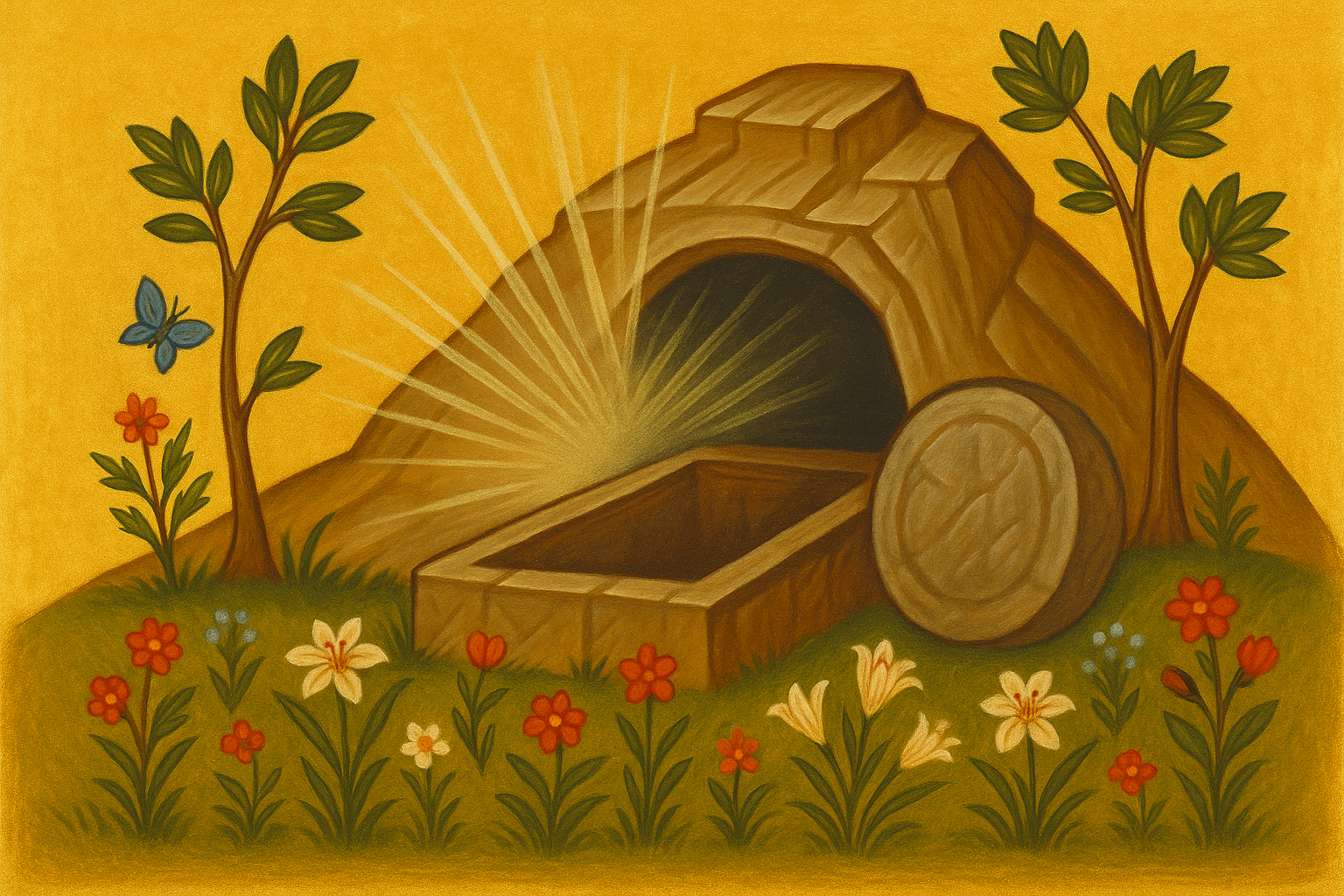Sham El-Nessim: Celebrating Resurrection and New Life
In the Name of the Father, and the Son, and the Holy Spirit, One God. Amen.
May the blessing of the Father who calls us and His Only Begotten Son Jesus Christ who saves us, and the Holy Spirit who sanctifies and transforms us be with us all, that we may hear His word and bear fruit—thirty, sixty, and a hundredfold. Amen.
Introduction:
Sham El-Nessim is a deeply rooted Christian tradition that takes place on the day following the glorious Feast of the Resurrection. The word itself means “meadows” and symbolizes going out into the open fields among blooming plantations, a reflection of the resurrection and renewal of life.
This practice is tied intimately to the story of the Resurrection: because the tomb of our Lord Jesus Christ was in a garden, and because the disciples and the myrrh-bearing women went to the tomb to witness the miracle. Finding the tomb empty, and the burial cloths lying separately, they came to believe that Christ had truly risen, just as He had promised.
Patristic Insights:
St. John Chrysostom marvels at the mystery of the empty tomb:
“Let no one fear death, for the death of our Savior has set us free. He has destroyed it by enduring it. He spoiled Hades when He descended into it… Christ is risen, and not one dead remains in the grave.” (Homily on Pascha)
St. Cyril of Alexandria connects the garden of the tomb to the restoration of Paradise:
“He was buried in a garden, that He might by His resurrection make paradise bloom again.” (Commentary on John)
Thus, it became a tradition for the faithful to go out to the fields, to eat foods that symbolize the Resurrection, drawing spiritual meaning from the simple joys of nature.
Symbols of the Resurrection in Sham El-Nessim:
- Eggs: The egg symbolizes the Resurrection, because although the egg appears lifeless, life bursts forth from within it.
Tertullian echoes this mystery of life emerging from apparent death:
“What is more wonderful than that life should burst forth from the dead, as from the womb of the grave?” (On the Resurrection of the Flesh) - Fesikh (salted fish): Dead yet uncorrupted, fesikh represents the death of Christ without decay.
St. Augustine speaks of Christ’s incorrupt body:
“He rose again, the third day, as He said, in the same body, neither corrupt nor changed into a spirit, but immortal.” (Letter 164, To Evodius) - Green Herbs and Plants: Greenery symbolizes new life and growth.
St. Irenaeus taught:
“God planted the tree of life in the midst of paradise… so that man, growing and being nurtured in the tree of life, might attain immortality.” (Against Heresies, Book 5)
Celebrating Resurrection Through Creation:
St. Basil the Great reminds us:
“The world rejoices in spring because it mirrors the resurrection. Nature teaches us the return of life after death.” (Homily on the Hexaemeron)
In Sham El-Nessim, the faithful not only commemorate the Resurrection through Church prayers and liturgy but also embrace it physically by celebrating amidst creation’s renewal, eating symbolic foods, and feeling the breeze of new life.
A Call for Christians Today:
The spirit of Sham El-Nessim invites every believer to relive the Resurrection daily: to let go of the tombs of despair and rise into the gardens of hope; to celebrate the newness of life granted to us in Christ. Even today, when Christians gather to celebrate Sham El-Nessim, it is a profound reminder of Christian life — a life of continuous resurrection, spiritual springtime, and everlasting hope.
Conclusion:
May this Sham El-Nessim be a time for each of us to breathe in the life of the Resurrection, to taste the joy of the Risen Christ, and to walk among the fields of His endless mercy.
May the Lord bless us, transform our hearts and minds, that our homes may stand on the Rock, our hands serve in the harvest, and our hearts long for Heaven. Amen.

